Covering Blazblue, Arc System Works’ second fighting game megahit, is a challenge. Not because of
the way the game plays; that’s easy enough to describe. The hardest part about explaining Blazblue is
the story. Anyone who says fighting
games lack story can officially go to hell because they have not played the
story mode of the Blazblue series (or read my previous posts).
The home console versions of the games have extensive story modes with far more text and story than the minimal amount presented in the arcade versions. In story mode, it’s a visual novel with
fighting game gameplay, and I love well-told stories with epic shonen
fighting. However, even though I do like it, there's no dancing around the fact that Blazblue
has one of the most complicated, convoluted stories I have ever read, and I
have played all but one Kingdom Hearts game and Virtue’s Last Reward.
One of the big reasons for this is because Blazblue is not
unlike Final Fantasy 13 in that a lot clarification on anything mentioned is in ungodly mounds of text-filled supplemental material, and even with that there are some things the games have
flat-out admitted are hard to explain, abstract at best, or not going to be
explained until a sequel. It doesn’t
help that it involves time travel, a plot element that instantly makes any story at least
twice as complicated.
I like it when games save some answers for a sequel to make a
franchise feel interconnected, like it was all planned in advance, but there is
such a thing as taking it too far, much like Kingdom Hearts has been nudging
the edge of.
Because of this and the fact that I’m only covering the
first two Blazblue games, there are some speculations and assumptions I have to
make for this post. Therefore, every time
I make an uncertain statement about Blazblue’s story, I will mark it with an
asterisk “*” at the end of the sentence.
Think of the asterisk as shorthand for the phrase “I think," or alternatively, "or some crap like that."
Here are a couple of examples for reference:
Atsushi Inaba is the god of gaming.*
Ubisoft could firebomb a pound full of innocent puppies and not be any worse than they are now.
Hopefully that cleared things up. Other writers fear Blazblue’s plot and
offhandedly call the story nonsensical, but not I! I am going to make coherency out of this!
If anyone wants to clarify or correct any marked point of
this post, please let me know in the comments and I’ll correct it. I only ask you refrain from giving me any
corrections pertaining to something revealed in the recently-released third
game, Chronophantasma. If you do, I will
delete your comment. No spoilers please.
Story
Before getting to the main plot, it’s important to know the
Blazblue world’s history.
Several years before the events of Blazblue, the world was horribly decimated by a giant monster called The Black
Beast. 90% of the world’s population was
destroyed and the beast covered the entire world’s surface with seithr, an
airborne magical substance that’s deadly and even mutagenic in high
concentrations.
The black beast was defeated thanks to six
powerful beings known as the six heroes.
After a mysterious hero named Bloodedge sacrificed himself to
keep the beast at bay for a full year, the survivors of the earth developed special weapons that used seithr as an
energy source with the help of one of the heroes. Those weapons came to be
known as ars magus. With the ars magus
and the most powerful ones, the Nox Nyctores, humanity defeated the Black
Beast in what is referred to as the first war of magic.
Because the seithr concentrated too highly in points of low
elevation, much of the world was rendered inhospitable, so in the rebuilding of society 13 towering cities
were built to allow living where seithr concentration is low. A new world government called the Novis Orbis
Librarium, led by the Imperator Librarius, was formed to keep order and control great sources of power like the ars magus and the grimoires (no, not books) that allow them to be used.
Though there are 12 others, the first two Blazblue games
take place in the 13th Hierarchical city of Kagutsuchi .
10 years after the first war of magic, the colony of Ikaruga (which houses six of
the Heirarchical cities) rebelled against the NOL, believing the NOL’s
dictatorship to be getting too strong and leading to oppression. Because both sides used Ars Magus, this
conflict is known as the second war of magic, or the Ikaruga Civil War. The war famously ended when one of the NOL’s
top officers, Jin Kisaragi, personally killed the leader of the rebellion named
Tenjo. By putting an end to the war, Jin
became known as the Hero of Ikaruga.
After the rebellion, the NOL naturally put an even tighter control on
ars magus, and there doesn’t seem to be any kind of equivalent to the NRA.
That much is certain and referenced several times in the
games, but here is where things start to get murky.
The NOL at some point started performing experiments with
“the boundary”, an abstract other dimension that seems to act as the epicenter
of the fabric of time, where all the timelines of the world lie.* I suppose you could say it’s kind of like the
gate in Fullmetal Alchemist, an abstract mass of infinite knowledge and power.
The NOL learned how to harness and study the power of the
boundary using special devices called cauldrons. Powered by a great many souls, cauldrons draw
power from the boundary and have allowed the NOL and their scientific rival Sector
7 to make powerful weapons, such as the most powerful ars magus, the Nox Nyctores, in something of a
supercharging process referred to as “smelting.”
Sector Seven (whom I’ll get to later) used cauldrons to make
Boundary Interface Prime Field Devices, also known as Murakumo units. The Murakumo units are a series of robots originally made for exploring the boundary, but were later also designed to be weapons.*
All of them are modeled after the same person and apparently can
age like a person. They all use
several swords as their weapons and combine them with gravitational and spatial
manipulation to really mess up anyone their master doesn’t like.
In the present day, at the time of the first game, Calamity
Trigger, a series of events over a specific time period have been playing over and over. Time has been rewinding itself and then
playing out differently thanks to Takamagahara.
Though who made it or when is unknown, Takamagahara is
an ultra-intelligent AI that exists beyond the fabric of space and observes the
different variations of the portion of time they keep in repetition, starting
with its creation/activation and always ending with main character Ragna falling to the
first game’s villain, supposedly causing the apocalypse.*
.png) |
| Takamagahara is the shadows. |
Yes, the stories in Blazblue: Calamity Trigger are actually
a series of possibilities that happen over and over again. Takamagahara keeps turning back time with
different results in order to prevent the great catastrophe (the calamity
trigger) that happens, which I will explain when I get to the characters.* It’s kind of like when you keep going back to
an earlier save to try something different in a game, and like a game,
Takamagahara can’t interact with the world directly. It can only influence causality, similarly
to how people imagine god works (but it doesn't consider itself as such).
 |
| Look what you diiiid! |
They’re unsuccessful until a wild card is thrown in in the
game’s true ending, resulting in a continuum shift (the second game’s title).* In Continuum Shift, only the true endings
tell what really happens. The story is more linear, and Takamagahara cannot predict
what will happen because it’s their first time observing it. Instead, they can only come up with what could happen and process every possibility, which I believe is what
the bad endings in Continuum Shift represent.
With that bit of heavy-handed exposition out of the way,
let’s move on to the heavy-handed exposition about the characters of Blazblue.
Heroes
The main character of Blazblue is Ragna, also known as Ragna
the Bloodedge, also known as the Grim Reaper.
When he was an orphan, the church Ragna, his brother Jin, and their
sister Saya grew up in was burned to the ground by Jin, after which Jin cut
Ragna’s arm off and kidnapped Saya.
Taking a liking to Ragna, the vampire Rachel gave Ragna the
Azure Grimoire, also known as the Blazblue.
It is the most powerful grimoire there is that seems to tap into the
power of the boundary, known as the Azure.
The Azure Grimoire became Ragna’s new arm, which you’d think would be
great, but because the Azure Grimoire is practically a dense concentration of
Seithr, the Black Beast’s evil power lies within it. He had to be trained to control this power by
Jubei, one of the six heroes.
When his training was completed, Jubei bestowed upon Ragna
the jacket and weapon of the great hero Bloodedge, which helped him develop his
nickname of Ragna the Bloodedge later.
Ragna despises the NOL.
So much so that he has gone around the world destroying NOL bases and
their cauldrons, which has given him the biggest bounty in the world on par
with Vash the Stampede. Thankfully
though, only a select few people (and by that I mean playable characters) actually do anything because A: nobody wants to get involved with the NOL and B: the wanted posters aren't very accurate.
You would think that would make Ragna a very badass, gruff
archetypical criminal character akin to Soul Badguy, and he is, but Ragna is
actually very often the butt of jokes in Blazblue’s comedy (as shown
above). God seems to want him to suffer
and he always plays the sarcastic straight man loner around all the weird
characters in the game. Of course, like
any game hero, he also helps people when they need it, even if he hates them as
a person or it’s not his business, but he does it all with a sarcastic
attitude.
He’s also scared of ghosts.
In the first game, Ragna has a vendetta against his brother
Jin Kisaragi, who himself obsesses over killing Ragna. Ragna was on the way to destroy the Cauldron at Kagutsuchi’s NOL branch, so getting to kill Jin was a nice side
bonus.*
But believe it or not, Jin is actually one of the heroes of
the story.
Growing up, Jin was adopted into the noble Kisaragi family
and attended the prestige NOL academy, where he was the student council
president and one of the most respected students, eventually rising in the ranks
of the NOL and earning the name of the Hero of Ikaruga after he ended the
Ikaruga Civil War by killing Tenjo.
It’s kind of hard to see him as a hero though, when he burned
down the church he lived in with his sister and brother as well as cut off
Ragna’s arm to make him into the bitter criminal he is today. But did he really?
In Calamity Trigger, when Jin hears that Ragna is in
Kagutsuchi, he immediately rushes out to go and find him. He doesn’t tell anyone where he’s going,
doesn’t pack his things for a trip, he just runs out there, prompting the NOL
to go out and find him, eventually labeling him as a deserter. Was it too much to ask for him to leave a sticky note?
He didn't even take an airship to Kagutsuchi, and because the lower levels of the earth are uninhabitable, that means he had to walk across the mountains to get there!
He didn't even take an airship to Kagutsuchi, and because the lower levels of the earth are uninhabitable, that means he had to walk across the mountains to get there!
I prefer E. Hondas.
I would get a new sword if I were you, Jin. This one clearly doesn’t have your best
interests in mind.
Even without Yukianesa’s influence, Jin is shown to be a
very aloof, stern and kind of stuck-up person, quite fitting of his use of ice
attacks. As stated though, that often changes
when he sees Ragna or the other hero, Noel Vermillion, who looks exactly like
Jin & Ragna’s sister Saya.
Noel is an extremely shy and kindhearted officer in the NOL
who was originally discovered amongst the ruins of the city of Ibukido , which was blasted off the face of
the earth by the killer satellite Nox Nyctores, Take Mikazuchi.
After that, she was adopted into an aristocratic family and
lived life like a normal person. She
attended the NOL academy, got decent grades, made friends, and was eventually
assigned as Major Jin Kisaragi’s secretary, even though Jin clearly hates her.
That makes her sound like your average everydude hero who
gets involved with some devious plot, but there’s more to it than that. The second game’s plot revolves around her.
Completely unknown to her until revelations in the second
game, Noel is actually the 12th Murakumo unit, Mu-12. Mu is different from the other Murakumo units
in that she was somehow chosen as the “Eye of the Azure”, essentially meaning
she is able to fully tap into the Boundary’s power without limits or
repercussions, can navigate the boundary’s endess void and can anchor the existence
of something from outside the timeline simply by acknowledging it.* Her dual pistol Nox Nyctores, Bolverk, have
kept her emotions in check, keeping her from losing control and reverting to
her programming as Nu.* When she loses Bolverk
in the second game, she does just that so that she can be used as a weapon by
the main villain, who I’ll get to in the villain section.
By the end of the second game though, Ragna forces her back
to normal in a way I don’t even know how to explain. You’ll have to play it yourself.
Assisting the heroes through the whole ordeal is the very
enigmatic vampire Rachel Alucard.
.jpg) |
| Darkstalkers again, huh. |
Rachel is the head of the Alucard family and seems to live
in a mansion that exists beyond the boundary, unaffected by Takamagahara’s time
looping, like Rachel herself.* This
is because she is an observer. Observers
are special beings tasked by Takamagahara with observing the different possible
timelines, basically acting as an extra eye for it so long as she doesn’t
interfere, not that Takamagahara could do much to an observer even if she did.* Additionally, observers are special in that
they’re able to cement someone from another timeline into the one they’re in by
simply acknowledging their existence of being from another time.* To get around, Rachel has a teleportation ars magus that hasn't really been expanded upon.
Even though she shouldn’t, Rachel interferes in the
timelines a lot in the first game, but gets away with it by being really
cryptic and not explicitly stating anything.
All she really does is give characters a nudge in the right direction.* In fact, even though Ragna is the hero, he's largely clueless about the bigger picture. It's like he's simply another part of the timeline that only knows about what's right in front of him, and he's aware of that.
Rachel's interference comes to a peak at the end of the game when she prevents the heroes from being obliterated by Take Mikazuchi by using the ultra special shield system Tsukuyomi. After that, Rachel resigns from her position as an observer, but seems to keep her powers, which she uses to help.
Rachel's interference comes to a peak at the end of the game when she prevents the heroes from being obliterated by Take Mikazuchi by using the ultra special shield system Tsukuyomi. After that, Rachel resigns from her position as an observer, but seems to keep her powers, which she uses to help.
But none of these heroes are cool in the face of one who
excretes awesome from every pore of his body.
Though Ragna is designated as the main character, I wouldn’t call him
the main hero. The real hero is the
hammer of love and justice! The one who
resents evil and protects the innocent!
The other hero of
Ikaruga! Bang Shishigami!
.png) |
| We might as well name every other character "Not Bang", but then they'd be hard to distinguish. |
I was originally going to place Bang under the “other guys”
section, since he’s not very plot relevant, but he’s the hero, dammit!
Bang was on the side of Ikaruga during the Ikaruga Civil War
and was the apprentice of Tenjo
himself. Naturally, since Jin killed his
master, Bang believes him to be a cold-blooded killer and his sworn enemy! When he’s not out fighting evil and
collecting bounties on criminals as a vigilante, Bang spends his time watching
over a district of Kagutsuchi called Ronin-Gai, where he and his fellow ninjas
all take refuge.
Bang is what would happen if Yukimura Sanada and Kim Kaphwan
raised a kid and only let that kid watch shonen anime, sculpting him into the
physical manifestation of the essence of shonen itself!
He fights with honor (he never sneak attacks even
though he’s a ninja), cares for his friends like family, never kills, refers to
himself with “I, Bang Shishigami,” instead of simply “I” and shouts! His every!
Line! He cares not for his own
safety so long as he is able to save someone else, he always helps those in
need, and if he had any more fire in his soul, it’d take 10 minutes of a fire
hose fully blasting him to put him out!
He doesn’t even need no fancy Nox Nyctores! Unlike most of the other characters that
wield weapons, Bang does most of his fighting with his bare hands, only using
his special nails for a few special attacks and his astral heat (more on those
later).
He’s so badass he gets his own theme song! When Bang successfully hits his opponent with
his burning heart move 4 times, he undoes the four seals that keep his power
contained, allowing him to use Fu Rin Ka Zan!
It’s kind of like the chakra gates in Naruto.
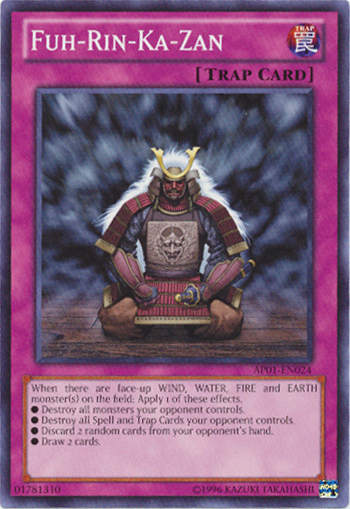 |
| And kind of like this. |
When Bang uses Fu Rin Ka Zan, he glows with an awesome power
and gets a huge boost in speed that lets him dash in any direction around
the field, all while Japanese rock band Jam Project sings about how awesome Bang is, which
is to say, the most awesome character in Blazblue!
“Shishigami ninpo forbidden art! Fu! Rin! Ka Zan!”
Aaaaand the world pushes him around.
 |
| Don't worry. He pays it back. In the only way he knows how. |
The Six Heroes
In order to really go into detail on the other characters,
it’s important to go over the six heroes that originally defeated the Black
Beast, as they all play into the plot to varying degrees.
The most prominent of them in the story is the masked
warrior Hakumen, a very cold, no-nonsense, motivated samurai-like fighter with
a really strange armored outfit.
This is because it’s not his real body, it’s a special body
called the Susano’o unit his soul was transferred into by Sector Seven leader
Kokonoe after he somehow got his soul stuck in the boundary.
His real body is a Jin Kisaragi from another timeline, who
was sent into the past by the boundary at some point and fought the Black Beast
as one of the six heroes.
After that, he got caught in the boundary again, but this
time was sent into the future of the timeline he was in, where Kokonoe works as
his observer and installed a way to control the unit’s ability to teleport
across space, forcing Hakumen to do what she wants.*
Eventually Hakumen resists the teleportation, so Kokonoe seals him in one of Sector Seven’s labs to keep him under
control. This doesn’t last very long
when Rachel busts him out and becomes his new observer instead in the sequel.
Hakumen hates The Black Beast and in the first game is
determined to kill Ragna because he believes that he will become it. You could never tell that Hakumen is supposed
to be Jin, because this is a version of Jin Kisaragi that’s much more mature. He has hints of arrogance, but he fights in the name of what he believes is right. He really is an entirely different person
from Jin, which is an important part of his character.
It's not all that well explained, but apparently in order for him to be anchored to the timeline by an observer, he has to match what the observer objectively observes him as. In other words, he must convince himself entirely that he is the hero his observer thinks he is and not Jin Kisaragi.*
It's not all that well explained, but apparently in order for him to be anchored to the timeline by an observer, he has to match what the observer objectively observes him as. In other words, he must convince himself entirely that he is the hero his observer thinks he is and not Jin Kisaragi.*
But Ragna has yet to completely lose control of his Azure
Grimoire, thanks to his training by the expert swordsman Jubei.
.png) |
| Yes. |
Jubei is a beastkin, a human-animal hybrid created to combat
the Black Beast. Beastkin have increased
sensory and physical abilities as well as much longer lifespans than humans,
which is why Jubei is still around at the time of the games.
I’d ballpark Jubei to be in his late forties by human
standards. He certainly acts like
it. He’s very laid back, friendly,
speaks with a southern accent, and has yet to fight in the games even
once (onscreen). I assume that’s because he’s
retired. He wants a strong future
generation, so perhaps he wants that generation to fend for itself.
Jubei was married to another one of the heroes, Nine.
Nine was the one who taught human civilization how to use
magic effectively. Being a witch
herself, she was one of the best magic users to ever live. Nine and Jubei had a kid named Kokonoe, who will be explained in the Sector Seven section. What exactly happened to Nine isn’t
explained, but it’s strongly hinted one of the villains did something to her.
To cover the alchemy side of things, the heroes had Trinity
Glassfield, the kindhearted nerd.
 |
| Only seen in flashbacks, like Nine. |
Unfortunately, at some point in the past, Trinity got into
the boundary and was forced into a body housed by two other spirits, both of
which have more control over it than her.
That being is known as Platinum the Trinity, and she uses the nox nyctores Muchourin, which lets her materialize matter at the cost of her memories.
Trinity Glassfield is only able to take control of
Platinum’s body for very brief periods of time and it wears her out. In the second game, she uses these precious
minutes to deliver a rather cryptic message to Bang after Jubei sent the other
two personalities to find him. She said something about the giant nail on Bang's back and that Jin Kisaragi is not the enemy. That may be clarified in Chronophantasma.
Believe it or not, Rachel’s butler was one of the heroes
too. Valkenhayn R. Hellsing is and
always will be Rachel’s devoted servant and would face the fires of hell if it
meant making his lady happy. He’s been a
butler for the Alucard family for god knows how many years, so you know he’s a
man dedicated to his job.
Like Jubei, Valkenhayn is a beastkin, and can thus live for
hundreds of years. Unlike other beastkin
though, he has the unique ability to shift from human form to wolf form, the
fangs and claws of which are his only weapon on the field, not that he fights
much.
He becomes playable in the second game’s expansions, but
Valkenhayn isn’t very plot relevant and fighting is kind of against his
nature. He’s a lot like Guilty Gear’s Slayer in that even though he can kick ass, he’s too polite and proper to want
to. If he has to fight, it’s likely for Rachel’s benefit. In
fact, in one of his endings for Continuum Shift Extend, he goes through an
incredible, bloody battle in “The Valley of Death” (offscreen) just to use the
perfect microwave to make the perfect scones for Rachel.
Rachel sleeps through the entire fight and then says the
scones are too stale, which Valkenhayn doesn’t mind in the least.
The last of the six heroes is Terumi. I’ll have to get to him in the villains
section.
Sector Seven
In addition to the NOL, it’s important to establish Sector
Seven. While the NOL wants the world to run
by magic technology, Sector Seven wants science to reign and for Seithr to
be eliminated for good, like the days before the Black Beast came. Sector Seven is run differently as well, having a council of like-minded scientists as opposed to the ranks led by the Imperator at the NOL.
Like I stated
before, Sector Seven has done its own experiments with the boundary and has
quite a few accomplishments of their own, having created the Murakumo units and
their own atomically-powered ars magus imitations that don’t require seithr.*
Sector Seven is led by professor Kokonoe, the daughter of
Jubei and Nine. Kokonoe seems to hold
her mother in esteem, but hates Jubei for leaving them.*
Kokonoe is… Kind of a bitch, I’m not going to lie. She’s pushy.
She doesn’t care how something gets done and she has a
short fuse. She’s really not that big of
a jerk at heart, and she does genuinely care for some people, but when doing
business she means business. I’m sure we’ve all had a teacher kind of like
Kokonoe at some point. Except our
teachers don’t have a stockpile of nuclear missiles.
Until her DLC release for Chronophantasma, Kokonoe has never
had to fight. Personally I think making
her playable is a bit of a downgrade because one of the things I liked about
her was how she didn’t need to be strong to be effective. She had her smarts. Then again…
Her muscle is provided by The Red Devil, Iron Tager,
an incredibly huge super cyborg of her own creation that she can pretty much
control at will.
Not that she needs to. Tager may be a strongarm, but he's also a real genius. While he’s not a mechanical genius on the
level of Kokonoe, he knows a lot about science, the boundary and everything
about how the world of Blazblue works.
He’s kind of like Beast of the X-Men.
He and Kokonoe work really well together and often
discuss the best course of action in a mature way. Kokonoe occasionally uses Tager to test
something against his will, but Tager has explicitly stated that he does what
she says because he trusts her with his life.
From what I understand, Chronophantasma adds another fighter
from Sector Seven, but I haven’t played it yet.
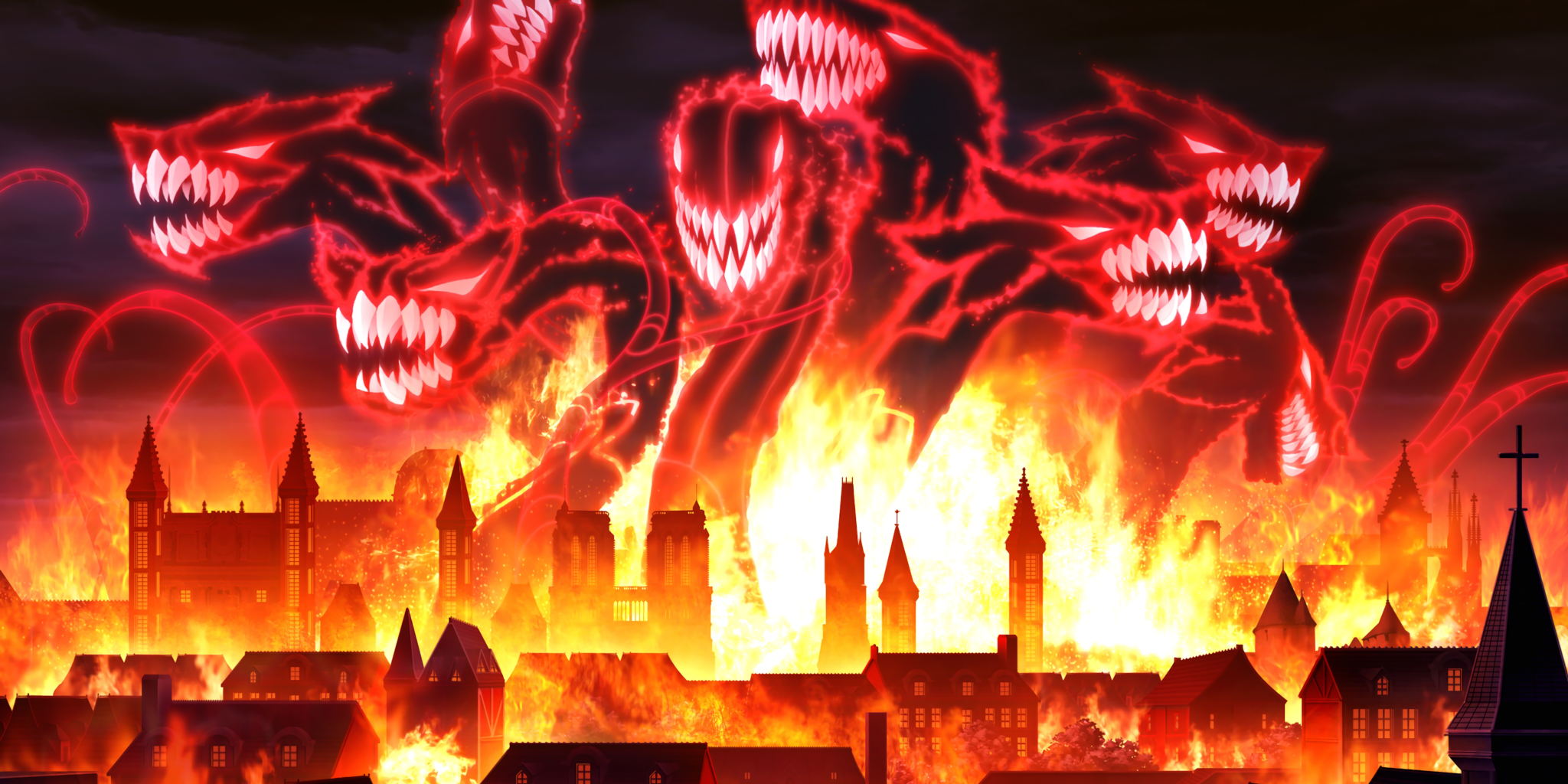
.png)

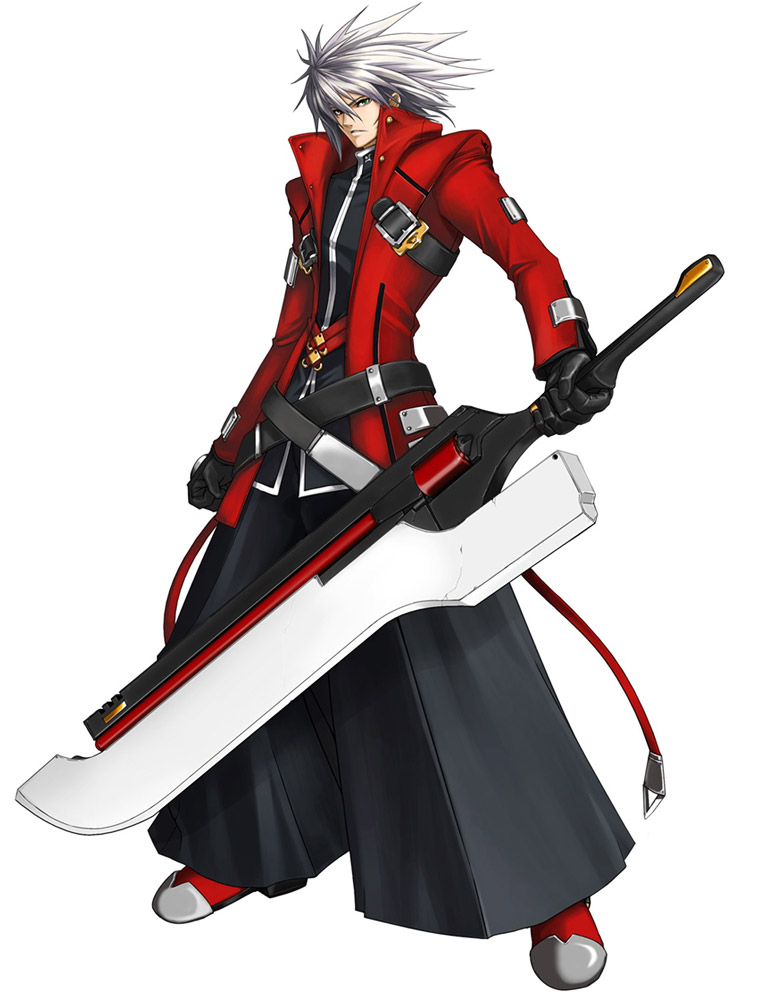
.png/revision/latest?cb=20131130202401)
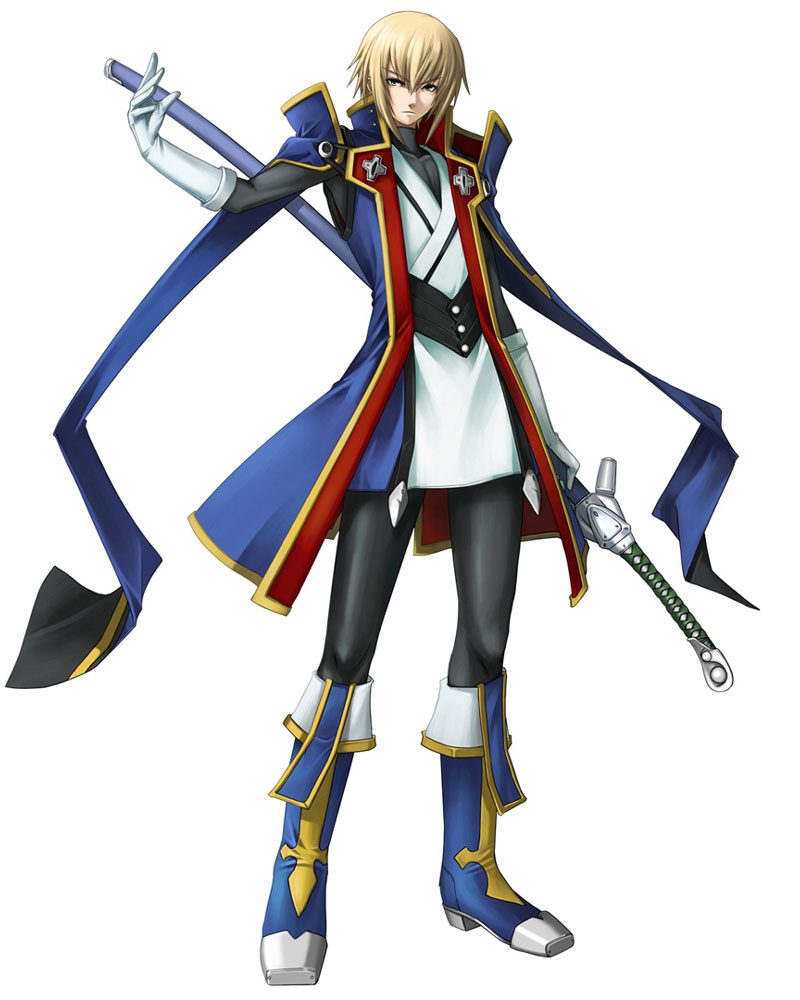
.png)
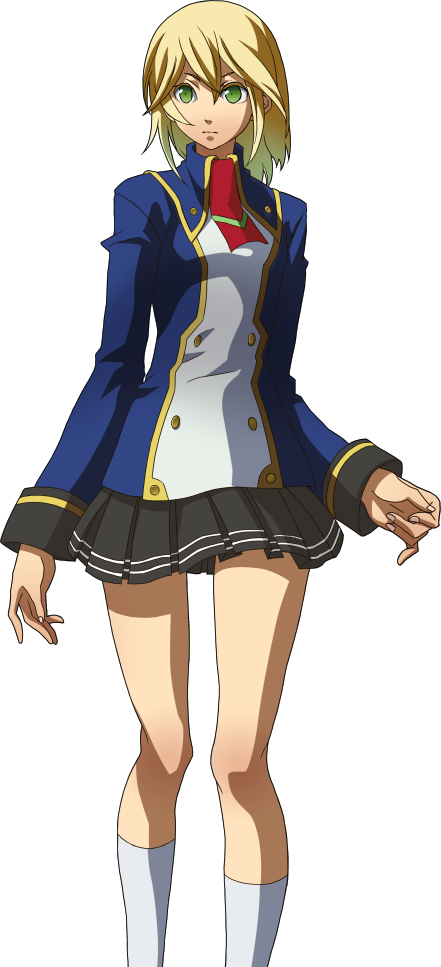
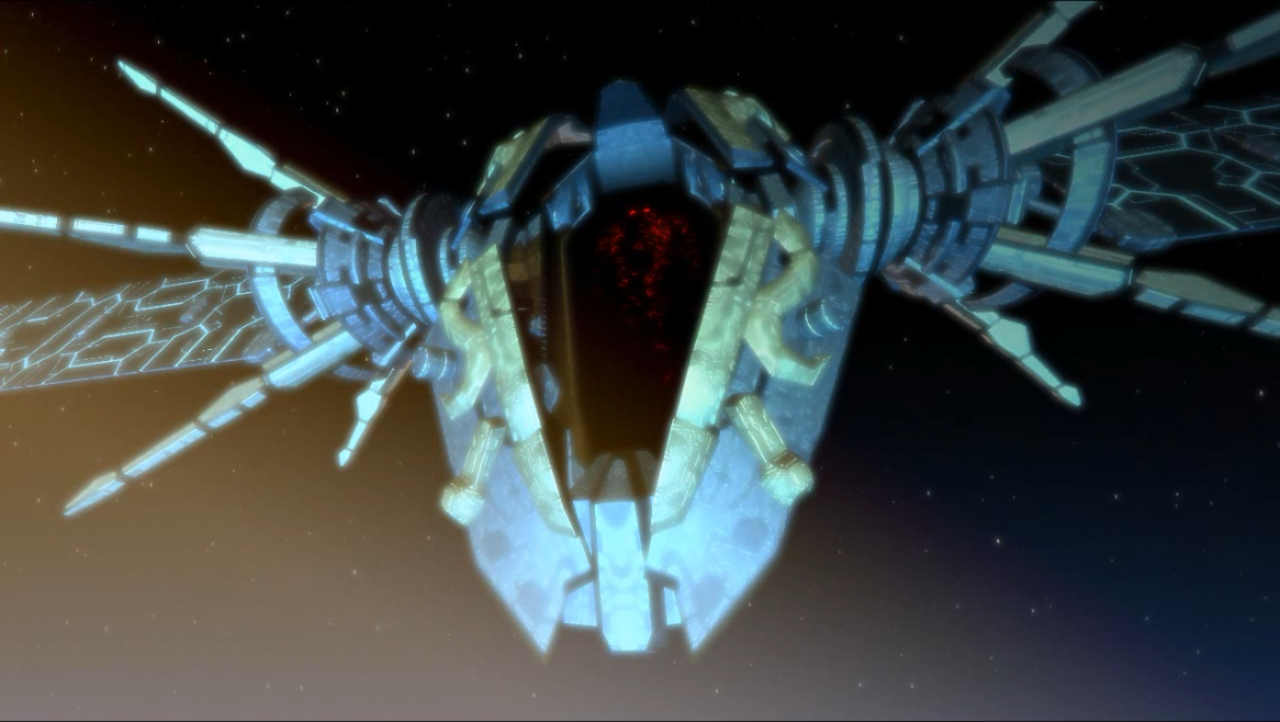


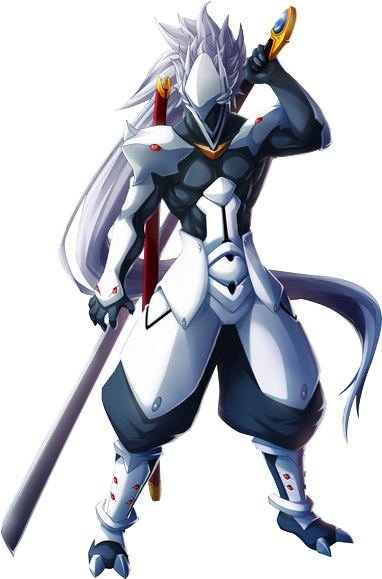
.png)
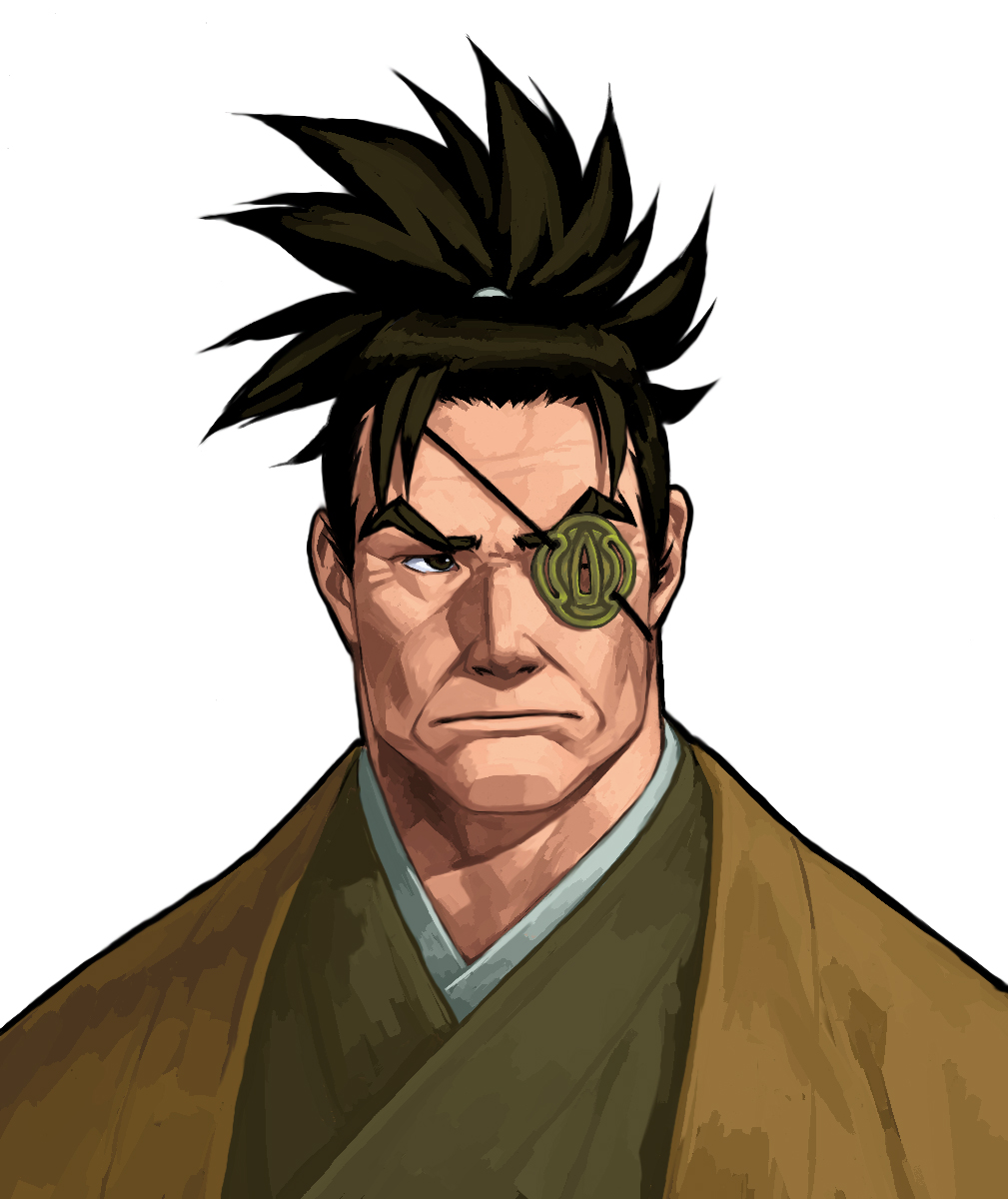

.png)
.png)



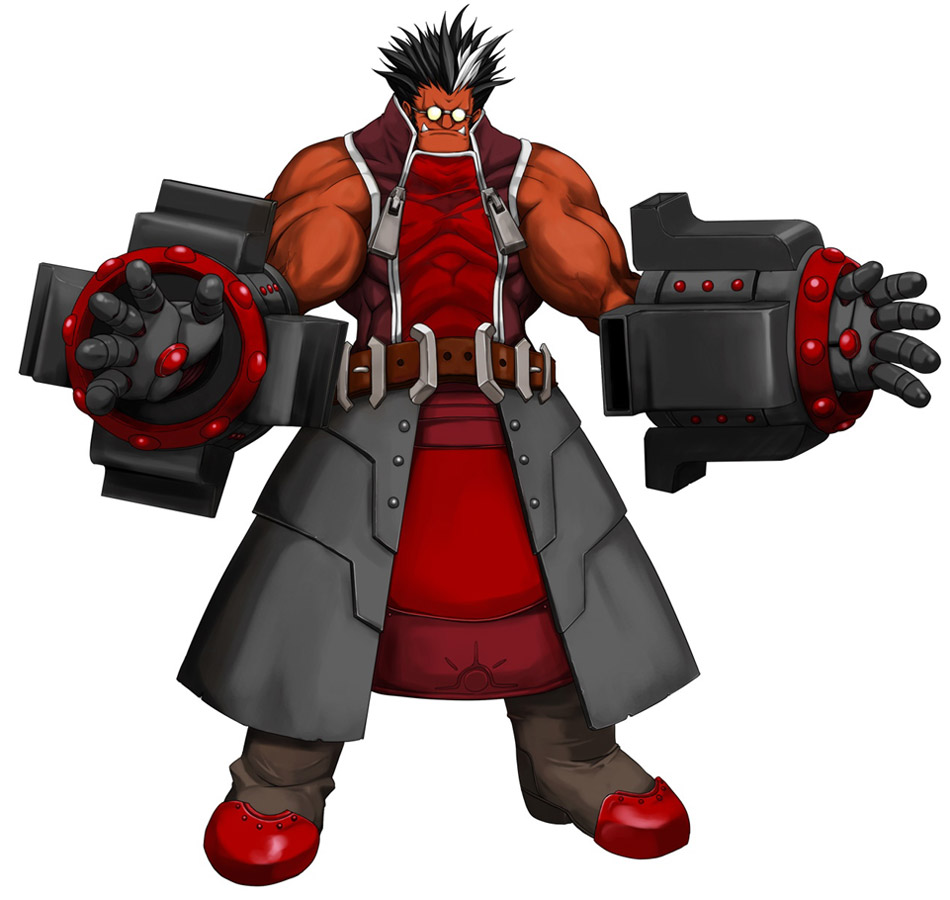
No comments:
Post a Comment